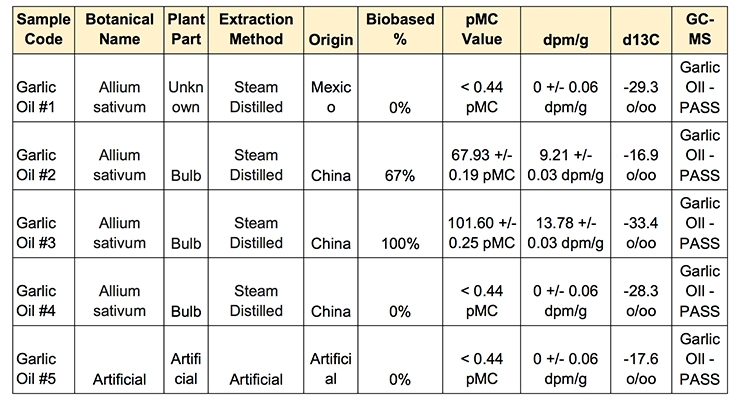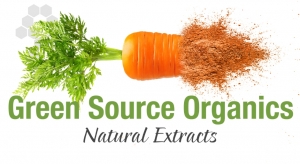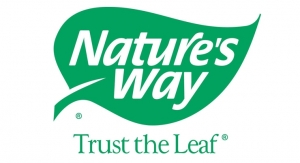By Jasmine Garside, Global Operations Manager, Beta Analytic, Research by Florencia Goren, Global Operations Manager, and Anna Lykkeberg, Research Associate, Beta Analytic11.08.17
The demand for food and supplement products sourced from nature goes hand in hand with lifestyle trends that promote health and well-being and the growing importance of wellness sector influencers on consumer purchasing preferences. It is well known in the nutraceutical and fragrance and flavor industries that consumers are willing to pay more for products labeled as 100% natural, which they tend to perceive as being “cleaner” or healthier according to countless consumer studies. An increasing number of brands are eager to cater to this lucrative trend. Since procuring botanical extracts and volatile plant oils in today’s international market often involves a wide range of suppliers across the globe, chain of custody can be difficult to navigate.
In a context where economically motivated adulteration and mislabeling is prevalent, this triggers quality assurance challenges for manufacturers. Beta Analytic, an ISO 17025-accredited laboratory that performs natural source testing on a wide range of ingredients such as extracts, essential oils and flavoring compounds, has found that only around 70% of samples received and analyzed in its laboratory yield results that are consistent with 100% natural source. The Florida-based testing facility caters to food and supplement industry stakeholders concerned about increasing adulteration in the industry and for almost a third of materials under investigation, results of carbon-14 analysis at the laboratory indicate that the samples are wholly or partially derived from fossil fuels substrates. This implies that ingredients being bought or sold as “natural” could have been mixed with synthetic petrochemical-derived compounds somewhere along the supply chain.
Manufacturers and downstream distributors of high-value ingredients therefore commonly resort to third-party testing to ensure that they are living up to consumer expectations when labeling products as “100% natural.” Putting garlic oil in the spotlight, this article takes a look at how two analytical techniques that are used extensively to verify the natural source of ingredients work in practice: carbon-14 (C14) analysis using accelerator mass spectrometry (AMS) and gas chromatography-mass spectrometry (GC-MS).
Backdrop to Garlic Oil Adulteration
Garlic oil is a widely sought-after flavoring agent in the food industry for meat, savory and vegetable applications and it is also used extensively in the nutraceutical industry. It is an ingredient in a number of dietary supplements thanks to its antibacterial, antibiotic and antioxidant qualities.
The high demand for raw garlic and garlic derivatives in the global market coupled with the poor geographical distribution of growing areas, which are heavily concentrated in India and China, means that the industry is vulnerable to price volatility on the supply side. For example, the Indian National Horticultural Board reported a sudden 40% price increase during the last three months of 2015 on both the wholesale and retail side as a result of an unexpected high demand and a poor crop yield brought about by unseasonal rains that year. In China, the garlic industry saw consumption and prices peak from 2009 to 2010 on the back of theories claiming that garlic could help tackle the swine flu epidemic. Prices then skyrocketed in 2015-2016 when a twofold increase in prices was reported for the commodity, due to a poor growing season in China and resulting financial speculation. The ongoing upward trend in prices for raw garlic means that garlic oil, which requires many garlic bulbs to produce, is increasingly expensive.
One other major factor that has contributed to the rising costs of garlic oil is the implementation of increased environmental controls in China over the past several years. This has brought about the closure of factories and contributed significantly to the rise of operating costs of those plants willing to take on the challenge of regulatory compliance. The knock-on effects of the 2016 closures are still resonating in the market through shortages and high prices, with production still below the current global demand.
Monthly essential oil market reports published by essential oils producer Berjé Inc. throughout 2017 indicate that quality issues with products labeled as garlic oil are still rife in the industry. In August 2017, the company reported that it was receiving a growing number of low-priced offers for “Garlic Oil” that could not be qualified as such after testing was performed. Berjé also noted that quality remained a “serious issue” and high prices for acceptable quality persisted. In October 2017, Berjé reported that the cost of good quality garlic oil had risen to historic levels, with prices for bulbs having tripled to 4.4 RMB/kg.
Garlic Oil GC-MS and Carbon-14 Analysis
Since authentic garlic oil is an increasingly expensive and sought-after commodity, garlic oil is vulnerable to adulteration and labeling that is either misleading or incorrect. At the lower end of the market in particular, it can be difficult to determine whether or not products on offer are genuine garlic oil. As such, extensive testing should be performed by companies before making claims such as “100% natural” to consumers in order to protect their brand reputation and bottom line.
One analytical technique used for characterizing essential oils such as garlic oil is gas chromatography-mass spectrometry (GC-MS). Essential oils are complex mixtures that are often made up of many different volatile compounds. GC-MS analysis is able to separate the different volatile compounds and show the relative amounts of each. The analysis reveals the presence and quality of chemical components and with expert interpretation, the method can reveal a sample’s chemical fingerprint. To make meaningful conclusions about the authenticity of an oil, it is necessary to compare the results obtained against an internal database or reference sample. In some cases, results may be inconclusive due to natural variation and extraction method used. Also, the setup of specific machine parameters influences results, meaning that interlaboratory comparison of GC-MS results can be difficult.
By contrast, AMS analysis differentiates plant source from fossil source by measuring carbon-14 content rather than isolating the individual constituents of a sample. Material from recently living biomass such as plants, animals and microbes contain a known level of the radioactive isotope carbon-14. Fossil fuels such as petroleum no longer contain any carbon-14 due to the isotope’s relatively short half-life of 5,730 years. Since carbon-14 depletes at a known rate, by measuring the amount of carbon-14 in a sample and comparing the value against an internationally used standard that represents the carbon-14 content of modern biomass, it is possible to determine with precision the percentage of a material that has been sourced from recently living natural sources (% biobased) as opposed to mineral sources such as petroleum (% fossil). The method cannot differentiate between different plant sources so carbon-14 analysis cannot be used to authenticate an essential oil definitively. However, synthetic substitutes are commonly used because they are usually much cheaper than their natural counterparts, so AMS analysis is useful as an effective screening method for petrochemical adulteration.
Putting Garlic Oil to the Test
A study performed by the carbon-14 lab Beta Analytic with assistance from two independent GC-MS laboratories demonstrated the application of the two analytical methods on garlic oil samples. Although the chemical profile was consistent with natural garlic oil when tested with GC-MS for all samples, only one demonstrated 100% natural source as per the AMS analytical results.
As part of the study, four retail samples in 10 milliliter bottles were bought from a major online shopping platform at $3, $7, $9 and $14 respectively in June 2017. All four retail samples were marketed as 100% pure, undiluted and therapeutic grade. In all cases the botanical name Allium sativum was specified and “bulb” was identified as the plant part for three out of four products. All product descriptions cited origins that are consistent with garlic growing regions: China and Mexico. One product description claimed that no additives, fillers or carriers had been added.
For comparison, an artificial garlic oil was analyzed as a fifth sample. This product, transparently marketed as an artificial blend, was procured from a high-quality fragrance, flavor and chemical B2B company.
The GC-MS results for the five samples indicated that they were produced from natural garlic oil. If the quality assurance manager had looked no further than the GC-MS results, he or she may have concluded that the product being purchased was genuine garlic oil in all cases. However, results from the carbon-14 testing for the retail samples demonstrated that two contained no plant derivatives at all (0%), one was only 67% naturally sourced and only one sample was 100% naturally sourced.
The two samples that yielded a result of 0% biobased carbon could not have originated from garlic bulbs. The sample that was 67% biobased was not entirely derived from fresh garlic and contained synthetic additives derived from fossil fuel sources. In this study, the product that both matched the chemical profile of genuine garlic oil and demonstrated a 100% natural source was priced at $1,400 per liter—almost five times the price of the cheapest blend included in the study. Aside from this genuine garlic oil retail product, the only other sample that was labeled transparently was the high-grade B2B garlic oil blend clearly marketed as artificial. For this sample, the GC-MS results were consistent with garlic oil but the carbon-14 results, as expected, did not reveal any plant-derived components.
The study shows that GC-MS yields useful insights on the chemical composition of garlic oil and indicate whether that composition is consistent with the naturally derived product. However, the method when used in isolation cannot definitively guarantee the authenticity of a garlic oil sample due to its failure to differentiate between petrochemical-derived and plant-based compounds. While carbon-14 analysis alone cannot authenticate garlic oil, testing resolves the challenge of plant versus petrochemical source because it determines the origin of the carbon in the sample. Verifying the source is crucial when making “100% natural” claims.
Conclusion
As any industry stakeholder knows, the reality of sourcing from nature for fragrance, flavor and supplement production is far less idyllic than the glossy images of plants, flowers and sun-lit countryside scenes in labels and advertising for natural products. Using natural ingredients requires resolving technical and quality assurance challenges with the help of reliable analytical methods. While GC-MS is a widely accepted technique for characterizing essential oils such as garlic, it is advisable to complement it with other analytical techniques that are aimed specifically at identifying the source of the material in order to identify whether a product labeled as 100% natural contains cheaper petrochemical derivatives before labeling claims are made downstream.
Founded in Miami in 1979, Beta Analytic is the world's largest carbon-14 laboratory and the first to gain ISO 17025 accreditation. The lab was technical advisor to all major standardization efforts worldwide that adapted carbon-14 testing to industrial applications such as bio-based product certification, biofuels and CO2 emissions monitoring. The company offers natural source testing to a global clientele working with fragrance, flavor, extracts, supplements, vitamins and essential oils. Results are reported in 2-5 business days. More information on natural source testing can be found at www.betalabservices.com.
In a context where economically motivated adulteration and mislabeling is prevalent, this triggers quality assurance challenges for manufacturers. Beta Analytic, an ISO 17025-accredited laboratory that performs natural source testing on a wide range of ingredients such as extracts, essential oils and flavoring compounds, has found that only around 70% of samples received and analyzed in its laboratory yield results that are consistent with 100% natural source. The Florida-based testing facility caters to food and supplement industry stakeholders concerned about increasing adulteration in the industry and for almost a third of materials under investigation, results of carbon-14 analysis at the laboratory indicate that the samples are wholly or partially derived from fossil fuels substrates. This implies that ingredients being bought or sold as “natural” could have been mixed with synthetic petrochemical-derived compounds somewhere along the supply chain.
Manufacturers and downstream distributors of high-value ingredients therefore commonly resort to third-party testing to ensure that they are living up to consumer expectations when labeling products as “100% natural.” Putting garlic oil in the spotlight, this article takes a look at how two analytical techniques that are used extensively to verify the natural source of ingredients work in practice: carbon-14 (C14) analysis using accelerator mass spectrometry (AMS) and gas chromatography-mass spectrometry (GC-MS).
Backdrop to Garlic Oil Adulteration
Garlic oil is a widely sought-after flavoring agent in the food industry for meat, savory and vegetable applications and it is also used extensively in the nutraceutical industry. It is an ingredient in a number of dietary supplements thanks to its antibacterial, antibiotic and antioxidant qualities.
The high demand for raw garlic and garlic derivatives in the global market coupled with the poor geographical distribution of growing areas, which are heavily concentrated in India and China, means that the industry is vulnerable to price volatility on the supply side. For example, the Indian National Horticultural Board reported a sudden 40% price increase during the last three months of 2015 on both the wholesale and retail side as a result of an unexpected high demand and a poor crop yield brought about by unseasonal rains that year. In China, the garlic industry saw consumption and prices peak from 2009 to 2010 on the back of theories claiming that garlic could help tackle the swine flu epidemic. Prices then skyrocketed in 2015-2016 when a twofold increase in prices was reported for the commodity, due to a poor growing season in China and resulting financial speculation. The ongoing upward trend in prices for raw garlic means that garlic oil, which requires many garlic bulbs to produce, is increasingly expensive.
One other major factor that has contributed to the rising costs of garlic oil is the implementation of increased environmental controls in China over the past several years. This has brought about the closure of factories and contributed significantly to the rise of operating costs of those plants willing to take on the challenge of regulatory compliance. The knock-on effects of the 2016 closures are still resonating in the market through shortages and high prices, with production still below the current global demand.
Monthly essential oil market reports published by essential oils producer Berjé Inc. throughout 2017 indicate that quality issues with products labeled as garlic oil are still rife in the industry. In August 2017, the company reported that it was receiving a growing number of low-priced offers for “Garlic Oil” that could not be qualified as such after testing was performed. Berjé also noted that quality remained a “serious issue” and high prices for acceptable quality persisted. In October 2017, Berjé reported that the cost of good quality garlic oil had risen to historic levels, with prices for bulbs having tripled to 4.4 RMB/kg.
Garlic Oil GC-MS and Carbon-14 Analysis
Since authentic garlic oil is an increasingly expensive and sought-after commodity, garlic oil is vulnerable to adulteration and labeling that is either misleading or incorrect. At the lower end of the market in particular, it can be difficult to determine whether or not products on offer are genuine garlic oil. As such, extensive testing should be performed by companies before making claims such as “100% natural” to consumers in order to protect their brand reputation and bottom line.
One analytical technique used for characterizing essential oils such as garlic oil is gas chromatography-mass spectrometry (GC-MS). Essential oils are complex mixtures that are often made up of many different volatile compounds. GC-MS analysis is able to separate the different volatile compounds and show the relative amounts of each. The analysis reveals the presence and quality of chemical components and with expert interpretation, the method can reveal a sample’s chemical fingerprint. To make meaningful conclusions about the authenticity of an oil, it is necessary to compare the results obtained against an internal database or reference sample. In some cases, results may be inconclusive due to natural variation and extraction method used. Also, the setup of specific machine parameters influences results, meaning that interlaboratory comparison of GC-MS results can be difficult.
By contrast, AMS analysis differentiates plant source from fossil source by measuring carbon-14 content rather than isolating the individual constituents of a sample. Material from recently living biomass such as plants, animals and microbes contain a known level of the radioactive isotope carbon-14. Fossil fuels such as petroleum no longer contain any carbon-14 due to the isotope’s relatively short half-life of 5,730 years. Since carbon-14 depletes at a known rate, by measuring the amount of carbon-14 in a sample and comparing the value against an internationally used standard that represents the carbon-14 content of modern biomass, it is possible to determine with precision the percentage of a material that has been sourced from recently living natural sources (% biobased) as opposed to mineral sources such as petroleum (% fossil). The method cannot differentiate between different plant sources so carbon-14 analysis cannot be used to authenticate an essential oil definitively. However, synthetic substitutes are commonly used because they are usually much cheaper than their natural counterparts, so AMS analysis is useful as an effective screening method for petrochemical adulteration.
Putting Garlic Oil to the Test
A study performed by the carbon-14 lab Beta Analytic with assistance from two independent GC-MS laboratories demonstrated the application of the two analytical methods on garlic oil samples. Although the chemical profile was consistent with natural garlic oil when tested with GC-MS for all samples, only one demonstrated 100% natural source as per the AMS analytical results.
As part of the study, four retail samples in 10 milliliter bottles were bought from a major online shopping platform at $3, $7, $9 and $14 respectively in June 2017. All four retail samples were marketed as 100% pure, undiluted and therapeutic grade. In all cases the botanical name Allium sativum was specified and “bulb” was identified as the plant part for three out of four products. All product descriptions cited origins that are consistent with garlic growing regions: China and Mexico. One product description claimed that no additives, fillers or carriers had been added.
For comparison, an artificial garlic oil was analyzed as a fifth sample. This product, transparently marketed as an artificial blend, was procured from a high-quality fragrance, flavor and chemical B2B company.
The GC-MS results for the five samples indicated that they were produced from natural garlic oil. If the quality assurance manager had looked no further than the GC-MS results, he or she may have concluded that the product being purchased was genuine garlic oil in all cases. However, results from the carbon-14 testing for the retail samples demonstrated that two contained no plant derivatives at all (0%), one was only 67% naturally sourced and only one sample was 100% naturally sourced.
The two samples that yielded a result of 0% biobased carbon could not have originated from garlic bulbs. The sample that was 67% biobased was not entirely derived from fresh garlic and contained synthetic additives derived from fossil fuel sources. In this study, the product that both matched the chemical profile of genuine garlic oil and demonstrated a 100% natural source was priced at $1,400 per liter—almost five times the price of the cheapest blend included in the study. Aside from this genuine garlic oil retail product, the only other sample that was labeled transparently was the high-grade B2B garlic oil blend clearly marketed as artificial. For this sample, the GC-MS results were consistent with garlic oil but the carbon-14 results, as expected, did not reveal any plant-derived components.
The study shows that GC-MS yields useful insights on the chemical composition of garlic oil and indicate whether that composition is consistent with the naturally derived product. However, the method when used in isolation cannot definitively guarantee the authenticity of a garlic oil sample due to its failure to differentiate between petrochemical-derived and plant-based compounds. While carbon-14 analysis alone cannot authenticate garlic oil, testing resolves the challenge of plant versus petrochemical source because it determines the origin of the carbon in the sample. Verifying the source is crucial when making “100% natural” claims.
Conclusion
As any industry stakeholder knows, the reality of sourcing from nature for fragrance, flavor and supplement production is far less idyllic than the glossy images of plants, flowers and sun-lit countryside scenes in labels and advertising for natural products. Using natural ingredients requires resolving technical and quality assurance challenges with the help of reliable analytical methods. While GC-MS is a widely accepted technique for characterizing essential oils such as garlic, it is advisable to complement it with other analytical techniques that are aimed specifically at identifying the source of the material in order to identify whether a product labeled as 100% natural contains cheaper petrochemical derivatives before labeling claims are made downstream.
Founded in Miami in 1979, Beta Analytic is the world's largest carbon-14 laboratory and the first to gain ISO 17025 accreditation. The lab was technical advisor to all major standardization efforts worldwide that adapted carbon-14 testing to industrial applications such as bio-based product certification, biofuels and CO2 emissions monitoring. The company offers natural source testing to a global clientele working with fragrance, flavor, extracts, supplements, vitamins and essential oils. Results are reported in 2-5 business days. More information on natural source testing can be found at www.betalabservices.com.


























